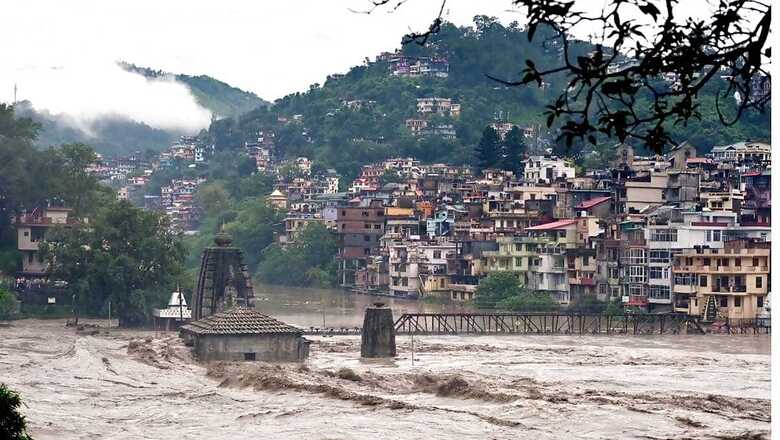
views
It was exceptional as the monsoon and western disturbance came together. Official data analysed by News18 shows that this year, India witnessed the highest number of ‘extremely heavy’ rainfall days in July since 2018.
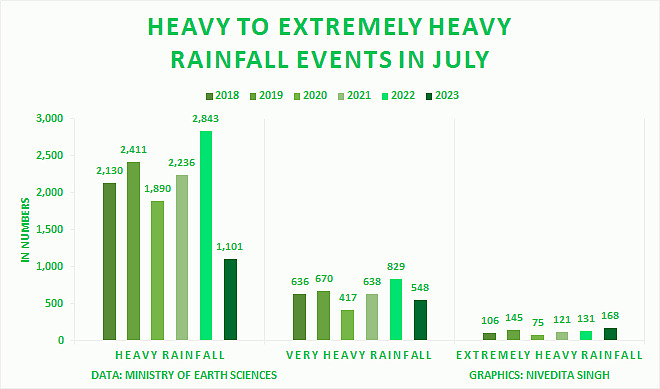
On the other hand, the events of ‘heavy rainfall’ reported in July 2023 were lowest for the month since 2018. The events of ‘very heavy’ rainfall were also lowest with July 2020 an exception.
Rainfall is divided into six categories: very light rainfall (trace to 2.4 mm), light rainfall (2.5 mm to 15.5 mm), moderate rainfall (15.6 mm to 64.4 mm), heavy rainfall (64.5 mm to 115.5 mm), very heavy rainfall (115.6 mm to 204.4 mm) and extremely heavy rainfall (more than 204.5 mm).
Since July 2018, incidents of extreme rainfall across India have gone up by 60 percent this year and, when compared to July 2022, the increase is of around 30 percent. Further, since 2020, there has been a consistent increase in the number of extreme rainfall events in July.
Last year, the number of heavy and very heavy rainfall events in July were exceptionally high, shows data from the India Meteorological Department (IMD).
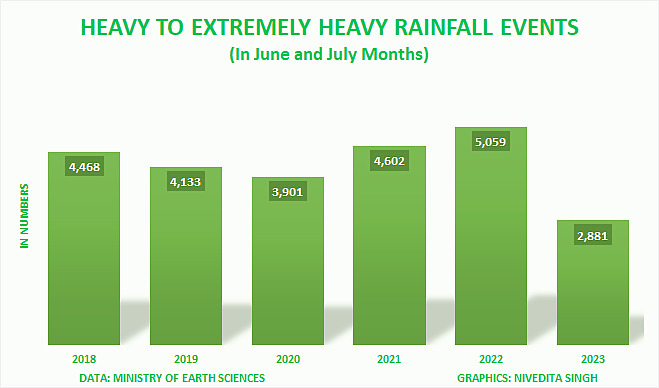
In 36 hours starting 8.30 am on July 8, Delhi recorded an unprecedented 260 mm of rainfall. This was 30 percent more than the 195.8 mm rainfall quota for the month. In a 24-hour period starting 8.30 am on July 8, the national capital recorded 153 mm of rain. This was not just the highest rainfall for a single day since July 25, 1982 (169.9 mm) but also the third highest single-day rainfall for July since 1958. A similar story was repeated in several other regions.
‘One degree Celsius rise in global temperature equals 15% jump in extreme rainfall’
According to a new study published in the journal Nature in June, for every one degree Celsius increase in global temperature, higher elevations can expect a 15 percent rise in extreme rainfall. Researchers at the department of energy’s Lawrence Berkeley National Laboratory (Berkeley Lab) found that climate change is shifting snowfall to rainfall on mountains across the northern hemisphere. Those surges of liquid water bring a distinct set of dangers, including floods, landslides and soil erosion.
The study found that while all the mountain ranges in the northern hemisphere are seeing the shift from snow to rain, those at greatest risk of extreme rainfall events are the North American Pacific mountain ranges, the Himalayas and high-latitude regions.
Despite witnessing the highest number of extremely heavy rainfall events, so far, this year’s monsoon has been the driest as compared to the last two years.
Since June 1, India has received 616.6 mm rainfall. It is about 7 percent less when compared to the long period average (LPA) of 664.7 mm. When compared to the last two years, this year India has received the lowest rainfall.
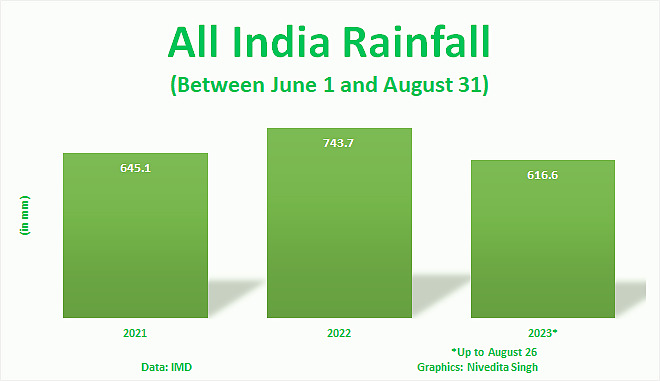
While four days are still left in August, India has received just 152.1 mm of rainfall this month, about 42 percent short of what it received in the same month in 2022. Even in July and June, the rainfall was less than what it was in the same months last year.
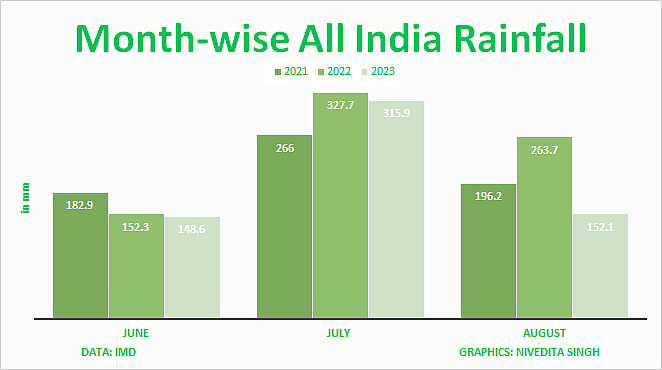

















Comments
0 comment